
Review on 16.4ft WS2812B Individually Addressable LED Strip Light 5050 RGB SMD 300 Pixels Dream Color 🌈 Waterproof IP67 Black PCB 5V DC – Waterproof 16.4ft LED Strip with 300 LEDs on Black PCB by Brian Carrizales

Withstands rain and light with no problem
I ordered two of these LED strips to wrap around a pole in my patio and they work great even after a couple of rainy nights. This is WS2812B ie The LEDs and work fine with the Arduino Nano I used. The NeoPixel library worked brilliantly with this strip. They have a JST male and female connector on the ends, meaning they can be connected together by mating the male connector of one strip to the female connector of the other. Once connected, they logically form one large lane, and the power and data fed to the first lane are also sent to the second lane without additional wiring. If you are using the Neopixel or FastLED library you don't have to worry about the LED index for the second strip either, as the second LED strip will get indices right after the end of the first LED strip, i.e. if you have a For example, if you have LED strips with 60 LEDs connected to the Arduino, then the LED index for that strip ranges from 0 to 59. If the second strip is attached to the end of the first strip, its LEDs will be numbered 60 to 119. 1. The strip's red wire goes to the Plus/V+ of the power supply2. The white wire of the strip goes to the negative/V-/ground (GND) of the power supply3. The green wire goes to the microcontroller's data pin. If you are using an Arduino/NodeMCU, provide a digital pin that you will use to drive the LED strip. This pin on your microcontroller should be connected to this green wire. Additional white and red wires are connected in parallel to the power lines. They are used so you can always plug in power instead of unplugging. Power Supply: The LED strip needs to be powered by a 5V supply. BTW, the Arduino also has an internal 5V supply, so you can use the Arduino to power the LED strip. However, the Arduino cannot draw enough current for the LED strip. So you can see that when all the LEDs on the strip are lit, their brightness decreases. I would recommend having an external power supply to power the strip during final installation. However, during the prototyping phase, I only use an Arduino to power the LED strip. But for the actual installation I have the following power supply B01LXN7MN3 ALITOVE 5V 15A AC to DC Power Adapter Wired Connections: I use the following setup when using the Arduino as a power source: 1. Power the Arduino from the USB2 port. Connect the strip's red wire to the pin labeled 5V on the Arduino3 board. Connect the strip's white wire to any pin marked as GND on the Arduino board.4. Connect the strip's green wire to the Arduino's data port (digital pin). It is also recommended to put a resistor (470 ohms) in between. To connect an external power supply I use the following setup: 1. Power on the Arduino using the AC adapter or USB2. Add a large capacitor (1000uF, 6.3V or higher) to the V+/Positive and V-/Negative/GND terminals of the power supply to be connected to the LED strip.3. Connect the red wire of the LED strip to V+/Plus of the power supply4. Connect the white wire to V-/GND of the power supply5. Connect the green wire to the Arduino data (digital) pin (along with the 470 ohm resistor) 6. Connect the V/GND of the power supply to the pin labeled GND on the Arduino. This is necessary so that both the LED strip and the Arduino work with the same GND signal. Otherwise, you may find that the LED strip is not working properly. In addition, there are power supplies that can supply more than one component, such as B. the 5V, 20A, 100W Universal Regulated DC Power Supply. If you use one of these, you don't have to worry about connecting grounds.
- Wow
- Vulgarity
New products
Comments (0)
Top products in 🎄 Seasonal Lighting
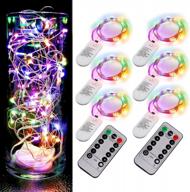
6PCS Multicolor Twinkle Lights W/Remote: 6.5Ft 20 LEDs, CR2032 Battery Powered For Bedroom, Wedding, Patio & Garden Decoration

44 Review
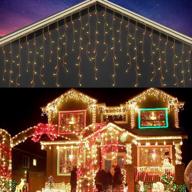
Funpeny Christmas Icicle Lights Outdoor Decorations 29.5FT 360 LED 8 Modes Clear Wire Curtain Fairy String Light With 60 Drops For Indoor Wedding Party Holiday Xmas Decor, Warm White

33 Review
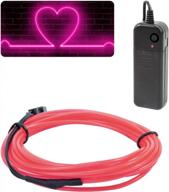
JIGUOOR 9.8Ft Pink EL Wire Light Strip With Battery Pack - Perfect For DIY Party Decorations And Festivities

33 Review
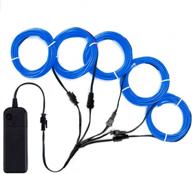
ZITRADES El Wire Kit- Electroluminescent Portable Lights For Festive Decoration -Perfect For Christmas, Halloween And DIY Parties- Blue

33 Review
Another interesting products
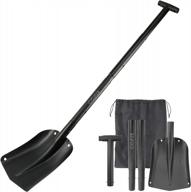
COFIT 43" Retractable Snow Shovel, Aluminium Alloy Snow Sand Mud Removal Tool For Car Outdoor Camping And Garden, Detachable Four-Piece Construction, Black

33 Review

CyberDyer Snowballs Indoor Outdoor Play

6 Review

🎄 DuraCasa Christmas Snow Blanket Set: 2 Rolls of 3ft x 8ft Artificial Snow Blankets - Ideal for Festive Decor, Village Backdrops

6 Review

🧣 Ultimate Comfort and Style with BUFF Lightweight Merino Wool Headwear – Perfect for Both Men and Women!

7 Review

